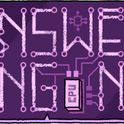It’s not often that I admit to being born in Cincinnati, Ohio. Less often still that I admit to being born 46 years ago. I fess up now because of Aidan Cockburn, assistant commissioner of health in Cincinnati in the year I was born. Cockburn wrote a book, The Evolution and Eradication of Infectious Diseases (1963), in which he speculated that a number of infectious diseases could be wiped out entirely: smallpox, malaria, tuberculosis, cholera, polio and yaws. He was inspired to this view in part because Cincinnati was the site of some of the earliest mass trials of polio vaccination, first with Jonas Salk’s injected vaccine in 1954-56, then with Albert Sabin’s oral dosing four years later. In 1960, there were no reported cases of locally acquired polio in the stolid midwestern city of my birth. Cockburn’s belief that it was possible to wipe diseases off the face of the Earth appeared vindicated when the World Health Organisation (WHO) declared the world free of smallpox in 1979. It was a colossal victory for the public health establishment; one that we have singularly failed to repeat with any other human disease. The WHO put polio in the crosshairs in 1988, when the disease was paralysing an estimated 350,000 children a year across the world. It valiantly set the virus’s death sentence for the year 2000. It didn’t make the deadline, but the result is still admirable: worldwide, fewer than 1,000 cases of paralytic polio were reported in 2010. We’re closer to eradicating polio than any of the other diseases on Cockburn’s list, partly because many older adults in rich countries recall the waves of crippling disease that washed over cities like Cincinnati in summer. Measles, sometimes spoken of as a candidate for eradication, doesn’t deliver the poster children on crutches that polio does, so it’s less politically compelling. As for malaria, the mosquito’s role in infection cranks up the complexity of ridding the world of that disease. Yet though $9bn has been sloshed under the bridge on global eradication campaigns, polio continues to circulate uninterrupted in Nigeria, India, Pakistan and Afghanistan. In 2010, 60 per cent of reported cases were in 16 countries that were once free of the virus. Worryingly, in a handful of those, including Angola and DR Congo, polio seems to be digging back in. This is a cause of huge frustration to Bill Gates, who appointed himself crusader-in-chief against polio. In January, he slapped $102m on top of the $200m he already had on the table for polio eradication, then put the screws on others to do the same. The crown prince of Abu Dhabi stumped up $50m. David Cameron pledged to double British taxpayers’ contributions to £40m a year for the next two years, as long as other nations matched the new money five to one. Gates says that’s still short by $700m a year—but he’s confident that we can close that gap and eradicate polio over the next two years. “I truly believe we can succeed,” he said in a recent webcast. “We have the science, the money and the organisation.” Some, including Richard Horton, editor of the medical journal the Lancet, think that Gates is obsessed. “It’s a quasi religious belief; he feels he has to prove that he can do it. And it would be a fantastic thing to have been the person to have led the crusade to eradicate polio. But it is sucking the oxygen away from other priorities.” The “we have what it takes to do this within two years” mantra is something I’ve been reading in the scientific literature for over 15 years. So why is polio still with us? For a start, the disease—which can cripple a child in a matter of hours—is more complicated than smallpox in almost every way. Over 90 per cent of infections show no symptoms initially, so the virus can be circulating widely before an outbreak is identified. It survives in the gut and is spread through faeces, so it does well in places with lots of people and few drains. Then there’s the vaccine: with smallpox, a single dose provided immunity in most cases. But there are three different strains of polio and several different vaccines, all of which require repeated doses. The main division is between the injected vaccines, made of virus that has been inactivated, and oral vaccines, made of virus that has been weakened so it prompts an immune response without making children sick. Most oral vaccines are trivalent, working (not that well) against all three stains of polio, though recently monovalent vaccines, which work (really quite well) against one strain have been introduced. Oral vaccines are far cheaper and easier to make than the inactivated vaccines, but they have major drawbacks. Firstly, in extremely rare cases, the oral vaccine can cause the very paralysis it’s designed to avoid. Secondly, and more worryingly, the weakened virus can, once reintroduced into the human gut and ecosystem, regain its strength and become as dangerous as wild-type polio. So “eradication” of wild-type polio doesn’t mean the end of the disease. As soon as cases related to “wild” infections disappear, we’ll probably need to stop using oral vaccines and switch to injectibles for five or ten years, just to protect against leftover oral vaccine viruses which may be girding their loins for a comeback. Poor countries can’t switch to inactivated vaccines because they can’t afford it—and anyway, there’s not enough vaccine available. “And you need large numbers of staff that can give injections in big campaigns,” said Paul Fine, professor of communicable disease epidemiology at the London School of Hygiene and Tropical Medicine. “The disruption to health services can be immense.” The displacement effect of the existing campaigns of oral vaccines is bad enough. “There’s already a really high level of fatigue among village health workers,” says Sanjoy Bhattacharya, a historian who studies public health campaigns in India. “People are just fed up.” That fatigue is induced in part by the frequent failure of oral vaccine to induce immunity in northern Indian children who live squeezed into slums with rotten sanitation. These kids can swallow their drops ten times or more and still get polio, because the vaccine runs straight through them. “You just hammer away with dose after dose, and hope that eventually you’ll get them on a day when they don’t have diarrhoea,” says Linda Venczel, senior programme officer working on polio at the Bill and Melinda Gates Foundation. I suggest that perhaps it might be wise to invest some money in better drains in these areas. “I sooooo hear what you’re saying,” said Venczel. “But Bill Gates thinks it’s a black hole to address water and sanitation.” Lately, the Foundation has begun to work more on generating community support, realising that it’s a key part of success. Opposition from religious leaders in northern Nigeria derailed anti-polio efforts there for over five years and allowed the virus to be exported across Africa. Polio eradication has become a priority for politicians and donors, but it cannot work without the buy-in of parents and community health workers. That gives those communities arm-twisting rights, which they can use to get services that meet their own priorities. In northern India, some mothers are beginning to use participation in the endless vaccination rounds as a bargaining chip to get new roads and new schools. Some of the challenges may be met with better technology, especially cheaper inactivated vaccines that don’t require refrigeration or injection. But even if the answer to “Can we eradicate polio?” is yes, the question of “Should we?” remains. Should we go the last mile, knowing it will be expensive, and perhaps as difficult as the first 99 miles put together? And eradicating polio may not remove the need for vaccination; many countries will want to keep immunising against it in case of bioterrorism.
Better sanitation, education and job opportunities would protect many more people against much more than just a single virus, but those messy, big-picture issues aren’t sexy. According to Bill Gates, eradicating polio “will energise the field of global health… and illustrate how a major advance in the human condition requires resolve and courageous leadership.” Drains, in contrast, don’t make heroes.












